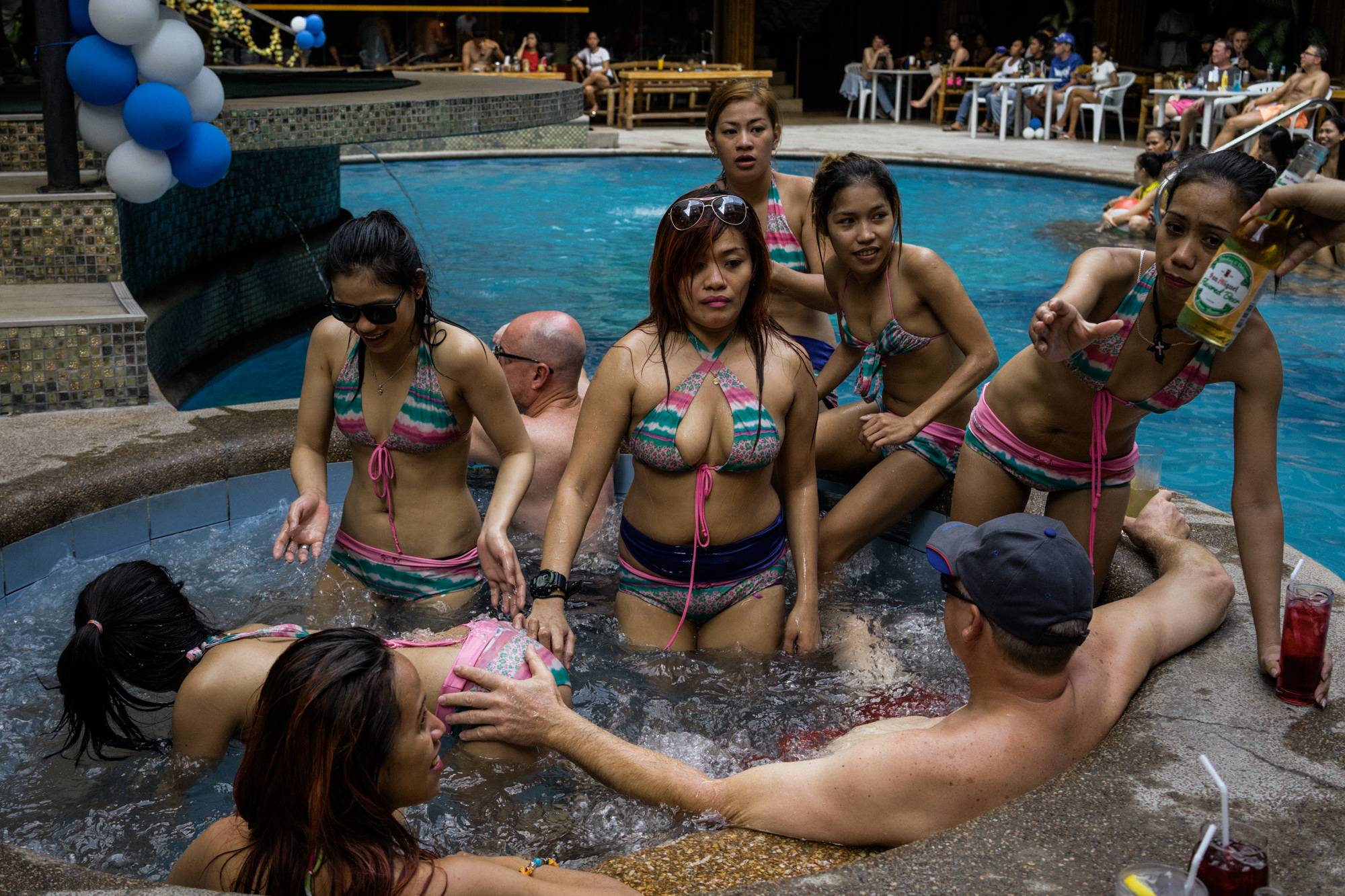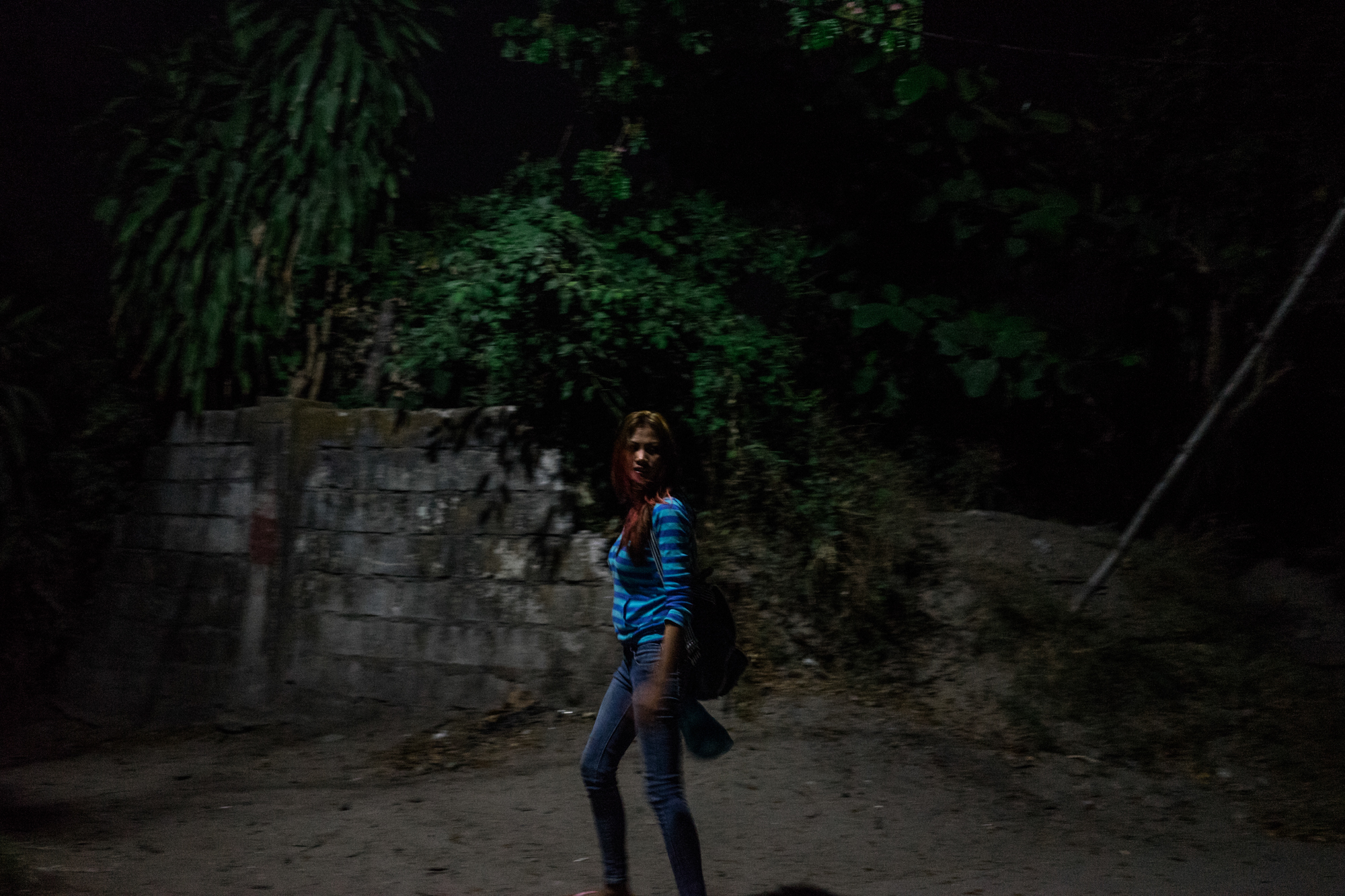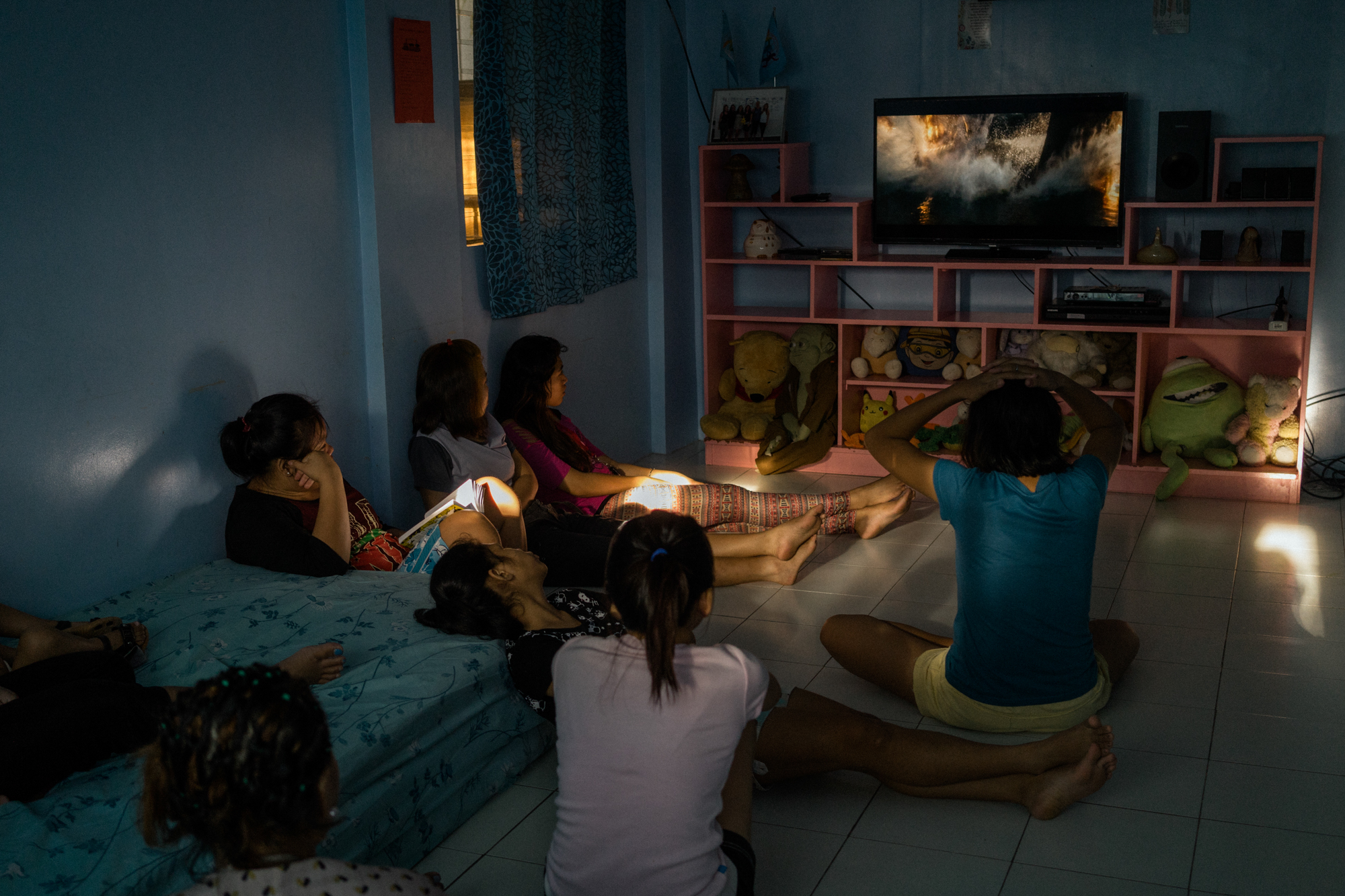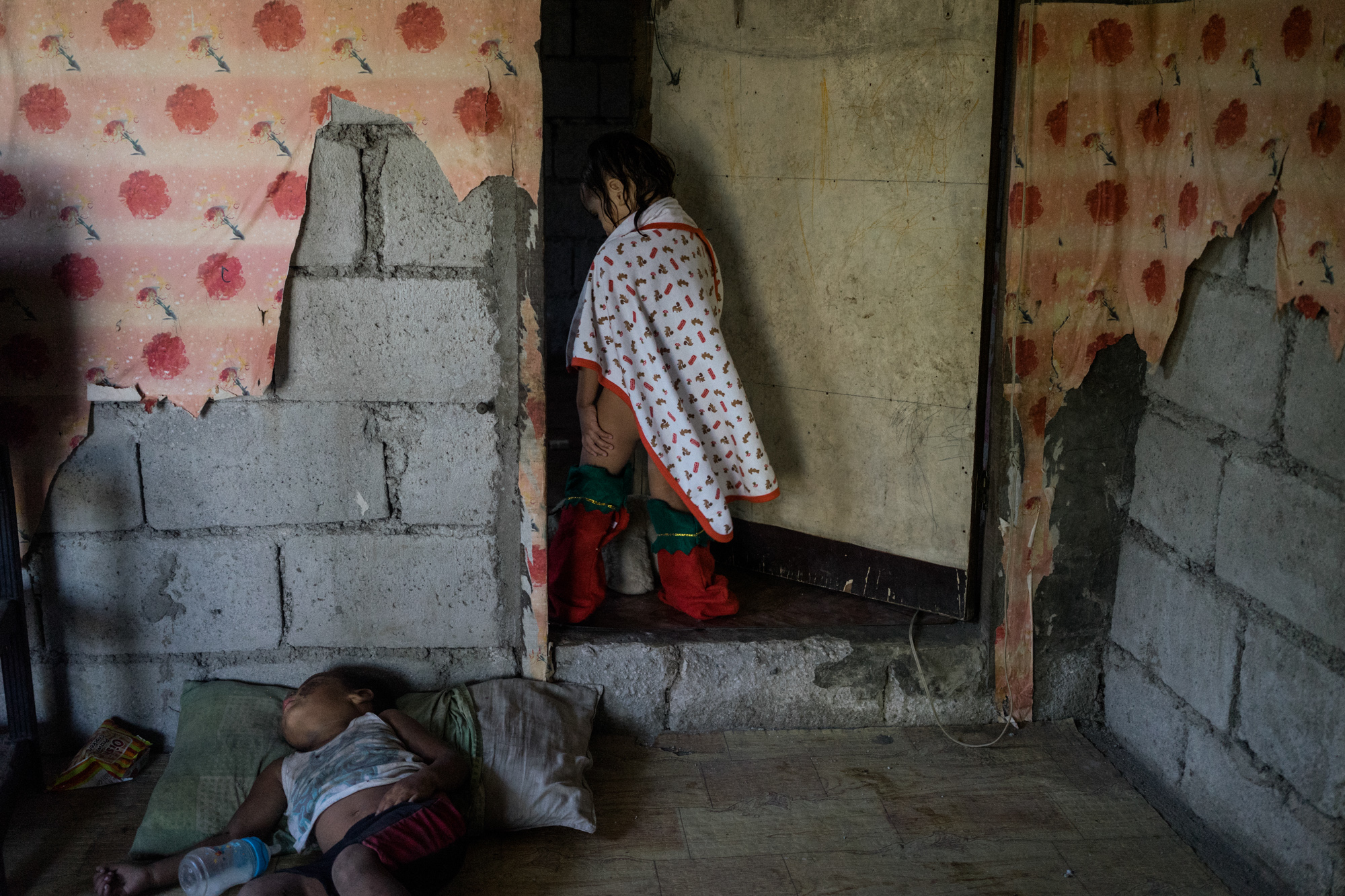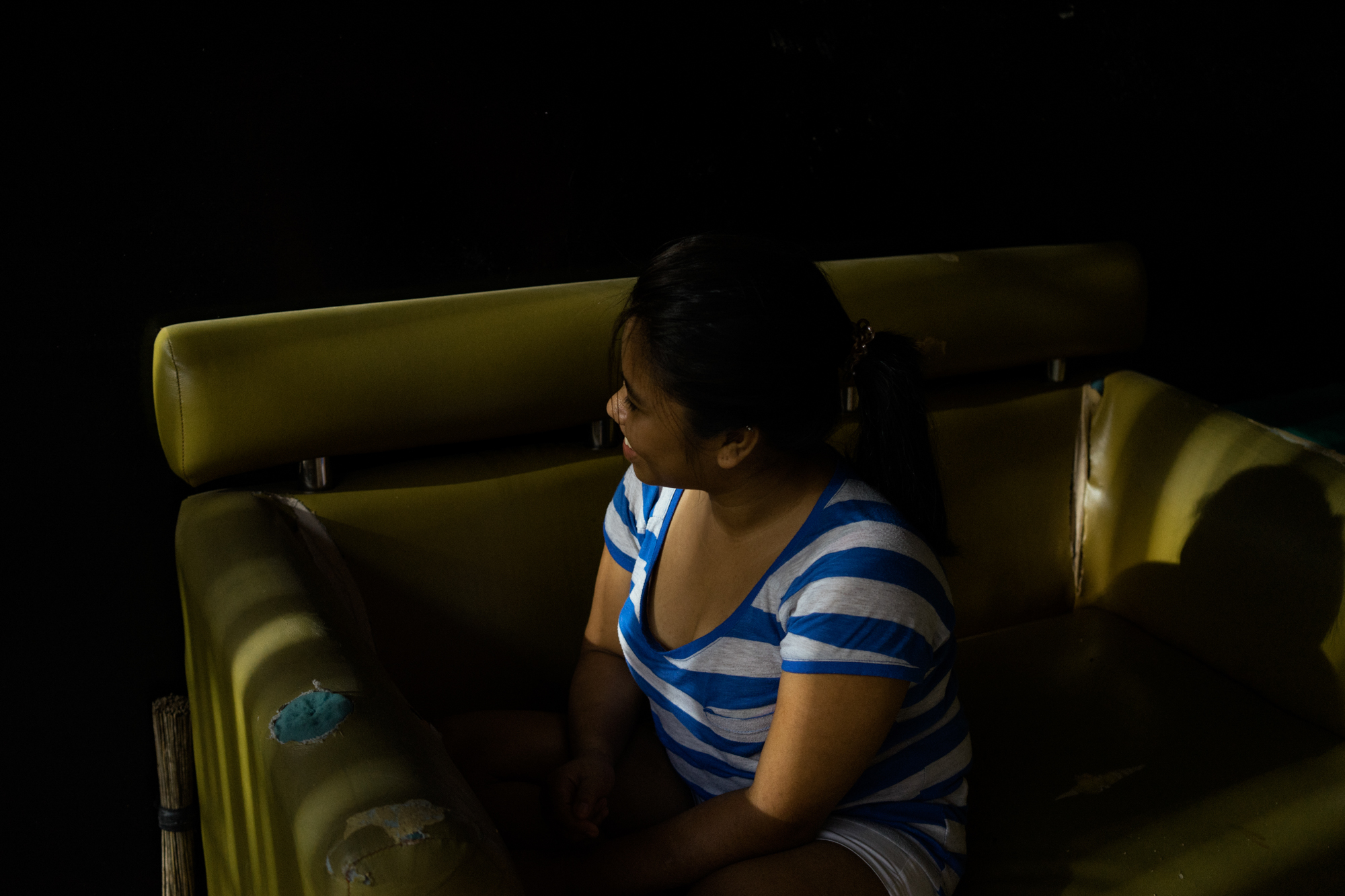Sex Trafficking in the Philippines:
Introduction
In 2013, Typhoon Haiyan struck the Philippines, displacing more than 4 million people, destroying entire communities and ruining millions of livelihoods. It was the fiercest storm to make landfall at the time, with winds reaching 196 miles per hour. The devastation spiked trafficking of women and children in impoverished areas already prone to the problem. With typhoons, hurricanes and other extreme weather events poised only to become more frequent with climate change, our team reports from the vulnerable island nation of the Philippines on the social aftermath of natural disasters, as part of our series, Living Proof: The Human Toll of Climate Change.
Sex Trafficking in the Philippines:
How typhoons and desperation make women and children vulnerable
When Kianna, 17, returned home to the Philippines island of Daram for the first time in several years, she was sad to see that her family still hadn’t been able to rebuild the home they lost in a devastating typhoon. She also saw that the corals she once loved swimming through were no longer vibrant.
When she was 11, Kianna was trafficked to the Philippines’ capital city, Manila, and forced to become a domestic worker. She says her mother sold her after the storm out of desperation. On their remote island, three-quarters of the population live in poverty and nearly everyone fishes or farms for their livelihoods. This dependence on the natural environment makes them particularly vulnerable to the immediate threats of extreme weather events and the long-term effects of climate change.
Daram is one of 7,000 islands that make up the Philippines, where rising global temperatures are contributing to the increased frequency and severity of extreme storms. In recent years, this extreme weather – the Philippines sees an average of 20 typhoons a year – is creating opportunities for human traffickers to exploit. Across the country, many women and children like Kianna have been forced into sex and labor work, or felt that entering such work was their only option.
When it struck the Philippines in 2013, Typhoon Haiyan made history as the strongest storm ever to make landfall. More than a million homes were damaged or destroyed. Four million Filipinos were displaced. The Eastern Visayas region, including Daram, was hit the hardest – more than 90 percent of the 6,300 people killed in the storm lived this region.

In the immediate aftermath of Typhoon Haiyan, thousands of people were traveling in and out of the worst-hit regions. This chaotic movement of people, along with the breakdown of infrastructure, exposed women and children to trafficking and sexual exploitation through prostitution, rape and assault. The United Nations Population Fund estimated that 5,000 women were victims of sexual violence in the month following the storm. In a country that has long struggled to stop human trafficking – an estimated 300,000 to 400,000 people, mostly women and children, are trafficked for sex and labor in each year – climate change is having long-term effects that make it easier for human traffickers to operate and more difficult for its opponents to respond.
Three years after Haiyan, parts of the Eastern Visayas have been rebuilt. But countless women and young girls cannot return home. Kianna, after a brief visit to reunite with family, still lives in a shelter in Manila. Underlying the constant flow of trafficked victims is the cycle of poverty that is pervasive in the Philippines. For many of those who were initially trafficked into prostitution, the chance to make some money in bars and brothels is enough to keep them there.
“It’s difficult in my hometown because people’s livelihoods stop,” Kianna said of the storms. “When there’s a typhoon, you can’t fish. You’re not allowed to go to sea. You can’t work in the fields.”
Storms and sea-level rise are forcing families in Daram and across the Eastern Visayas to relocate, said Alma Lucero, a local social worker.
“But where can they move? If they will move to the upland area, it’s prone to landslides. And you can’t force them to move because their livelihood is here, most of them are earning from fishing. So where can we move? To the middle of the sea?” she said.
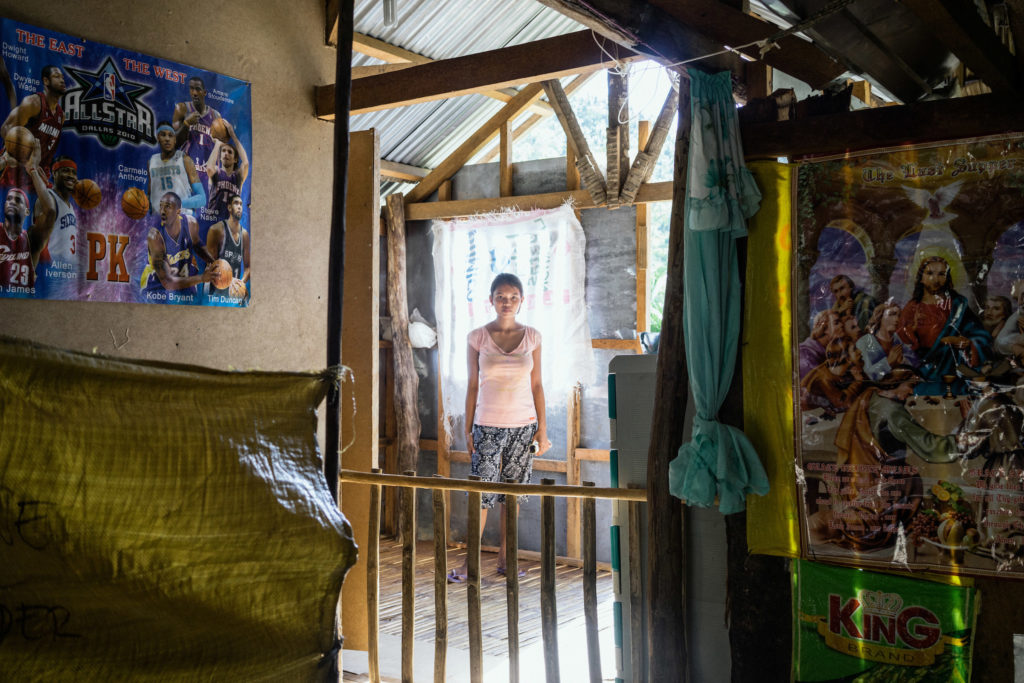
Kianna fled her abusive employer in Manila, but was soon recruited to work in a bar in the same red-light district where her mother had left home to work in.
After working in the bar for less than a year, she was counter-recruited. She was taken in by a Christian non-profit organization, Wipe Every Tear. Volunteers with the organization visit bars in the Philippines’ red light districts pretending to be customers, and then offer to help the girls leave the bar behind. Kianna took them up on their offer, and she now lives with other girls who escaped and are back in school.
“Women like us, who are here, each of us has a story. Everyone has that is pain inside her,” said Kianna. “We already went through this struggle, the hardship, the pain. We’re still too young to endure all this.”
The Philippines has made recent strides in countering the trafficking problem. For the first time since the U.S. began releasing its annual Trafficking in Persons report, this year the Philippines was ranked a Tier 1 country – a country whose government fully meets the minimum standards set by the Trafficking Victims Protection Act, a landmark U.S. law that defined human trafficking and set internationally respected parameters for the prosecution of traffickers and protection of victims. This builds on earlier efforts, made more than a decade earlier, by the country to stem the problem and abide by United Nations standards.
Local efforts are gaining traction outside of the country. Last year, Romina Sta. Clara of the International Organization for Migration held trainings in the Marshall Islands to share the Philippines’ model for addressing human trafficking during natural disasters.
“Now, the benchmark for planning is Haiyan,” Sta. Clara said.
Women like us, who are here, each of us has a story. Everyone has that pain inside her.
17-year-old victim of human trafficking
This model, created by the International Organization for Migration, in collaboration with Philippines’ Inter-Agency Council Against Trafficking, provides direct assistance to victims. They also hold trainings to spread awareness and strengthen the capacity of emergency service providers to recognize and help victims of trafficking during and after a disaster. A new evacuation shelter has been built with more secure restroom facilities, clear sightlines throughout the building and other design features meant to prevent exploitation.
But each new storm threatens to derail progress and official numbers of reported victims fail to capture the scale of the problem. Of the hundreds of thousands of people estimated to be trafficked each year, there have only been 265 trafficking convictions in the country since 2005.
During Haiyan, storm surges flooded the city prosecutor’s office in Tacloban, a city in the Eastern Visayas, destroying paper and electronic files. Every single open case was dropped after the storm. Tacloban finally got its first human trafficking conviction last year.
Kianna’s story isn’t uncommon, as the connection between climate change and gender-based violence strengthens.
“We’re not just seeing this as a phenomenon in the Philippines. This is something that more and more countries in the Asia Pacific will be affected by,” said Sta. Clara. “That’s the reality of climate change.”
See more reporting from Justine Calma in Quartz.
Sex Trafficking in the Philippines:
Sisters turn to sex work for survival
When Gemma first started working in the red light district of Angeles City, Philippines, at age 19, she was given a knife and pepper spray by her sisters. The eldest, Jojo, asked that she always text the name and room number of the motel where a man would take her.
The sisters wept.
Neon lights, high heels, lingerie, and loud music make up Angeles City, the ‘supermarket of sex.’ The sisters never planned to come here. They were honors students in high school, and their mother describes them as having been ‘godly children.’
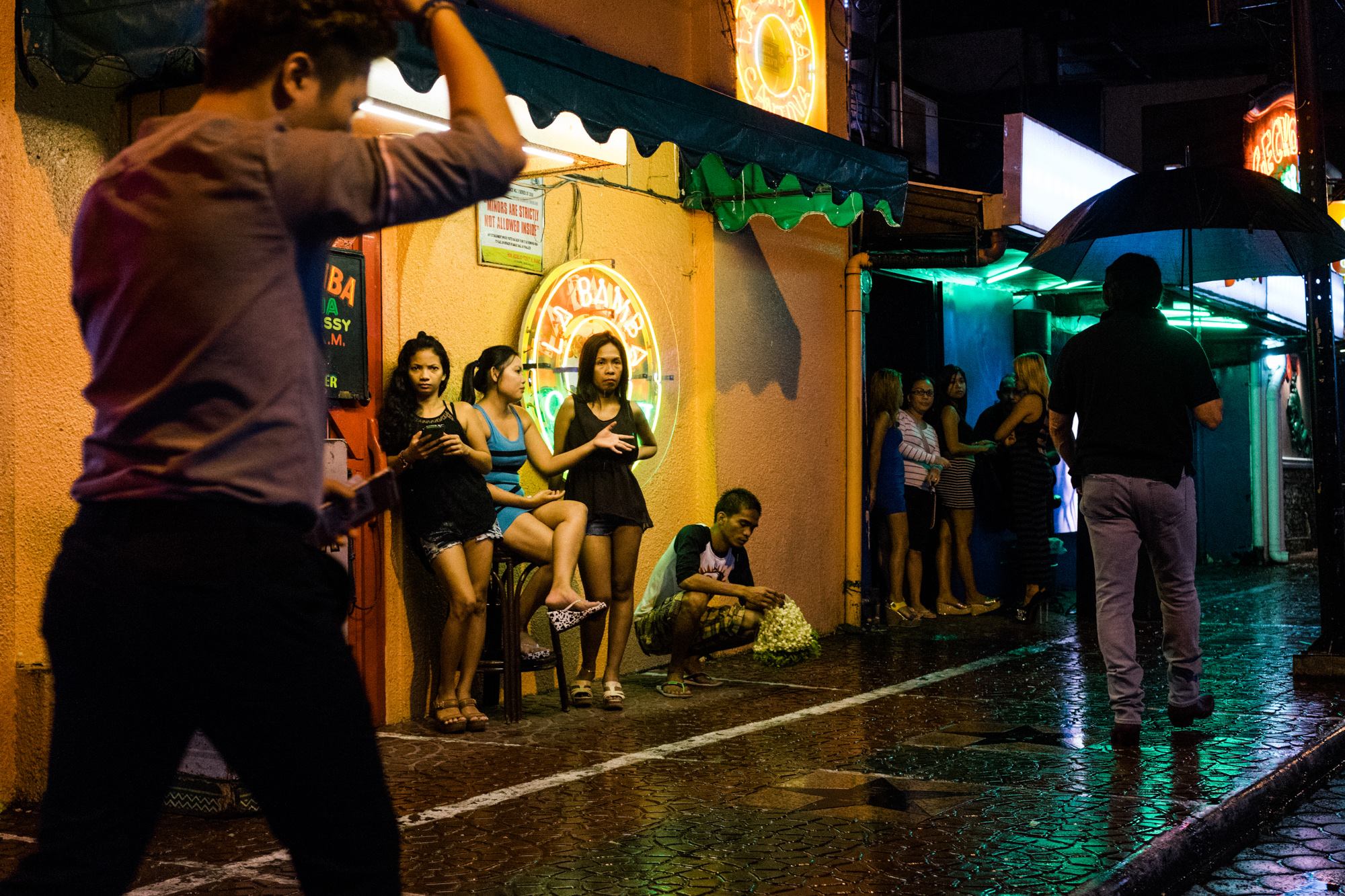
Jojo left Angeles City at 23 to go back and tend her rice field in Leyte. She had just given birth and was going to take care of the baby there, even though there were whispers from the neighbors about what she did for work. Within a day of moving back to Leyte, typhoon Haiyan came. Jojo and her family had to evacuate to a center. After a month, Jojo left her baby to go back into the sex trade.
“We won’t survive if we don’t have each other,” Gemma says. “We don’t leave each other behind.”
Jojo and Gemma are among the Filipino women who have wound up in the Philippines’ sex trade following displacement from typhoons. The Philippines consistently makes the lists of countries most affected by climate change, with its frequent storms. Among the most vulnerable regions is Eastern Visayas, where Jojo and Gemma are from. It’s primarily an agricultural region, and one of the poorest in the Philippines. It was Ground Zero for typhoon Haiyan. A report from ADB links natural disasters with extreme poverty, and states, ‘This reliance [on agriculture] is most striking in Eastern Visayas where almost half of household incomes of the poorest 40% households are derived from earnings from agriculture highlighting their vulnerability to poverty from natural calamities.’

Typhoon Haiyan hit the Philippines in 2013, displacing an estimate of 4 million people. It is one of the strongest tropical cyclones ever recorded. After Typhoon Haiyan the United Nations Population Fund estimated that 5,000 women were subjected to sexual violence just in the month after the storm. Darlene Pajarito, the head of the Philippines Anti Trafficking unit, describes the wake of typhoon Haiyan as a ‘feast for human traffickers.’ The U.S. State Department’s Trafficking Trafficking In Persons Report stated that internally displaced people, particularly from typhoon-stricken communities, “are subjected to domestic servitude, forced begging, forced labor in small factories, and sex trafficking in Manila, Cebu, Angeles, and urbanized cities in Mindanao.”
Numerous stories of victims surfaced after the storm. Katrina* alleges that at age 12 she was pimped out by her stepmother to foreigners in a shack not far from a storm evacuation center. Issa*, a pregnant 16-year-old, says she was promised a job – advertised as a “work from home” opportunity — that turned out to be a cyber sex den. From the same island, Sheryl* was trafficked into Angeles for her virginity until missionaries rescued her from the bar where she worked. Like Katrina, she now lives in a shelter for underage victims of human trafficking and sexual violence, with many other women who have survived. The rooms are adorned with various things– teddy bears, a cutout of the teen star Daniel Padilla, tiny pieces of paper folded to form a swan. A painting in the hallway reads, ‘Welcome to our home.’

But for many, leaving the sex trade is not an option. In Angeles City, the Philippines’ primary red light district thrives with foreigners, and Filipina women desperate to make money in its bars. Women can make money from various acts, from earning commission when a customer buys them drinks, engaging in sexual activities after a customer pays the ‘bar fine’ to take them out of their shift, or selling their virginity as a ‘cherry girl.’
‘In this town, most of the women are from Samar and Leyte,’ a bar girl tells us. ‘Life is hard there. We can’t leave our jobs because we’re the breadwinners.’ Like many of the matriarchs in Filipino families, Jojo has the responsibility to feed her family and rebuild their home. She and Gemma are working so their mom can seek treatment for her breast cancer. ‘We have no plans to go back there,’ Jojo says. ‘Here there’s at least some way to make a living. And here, there’s tequila.’
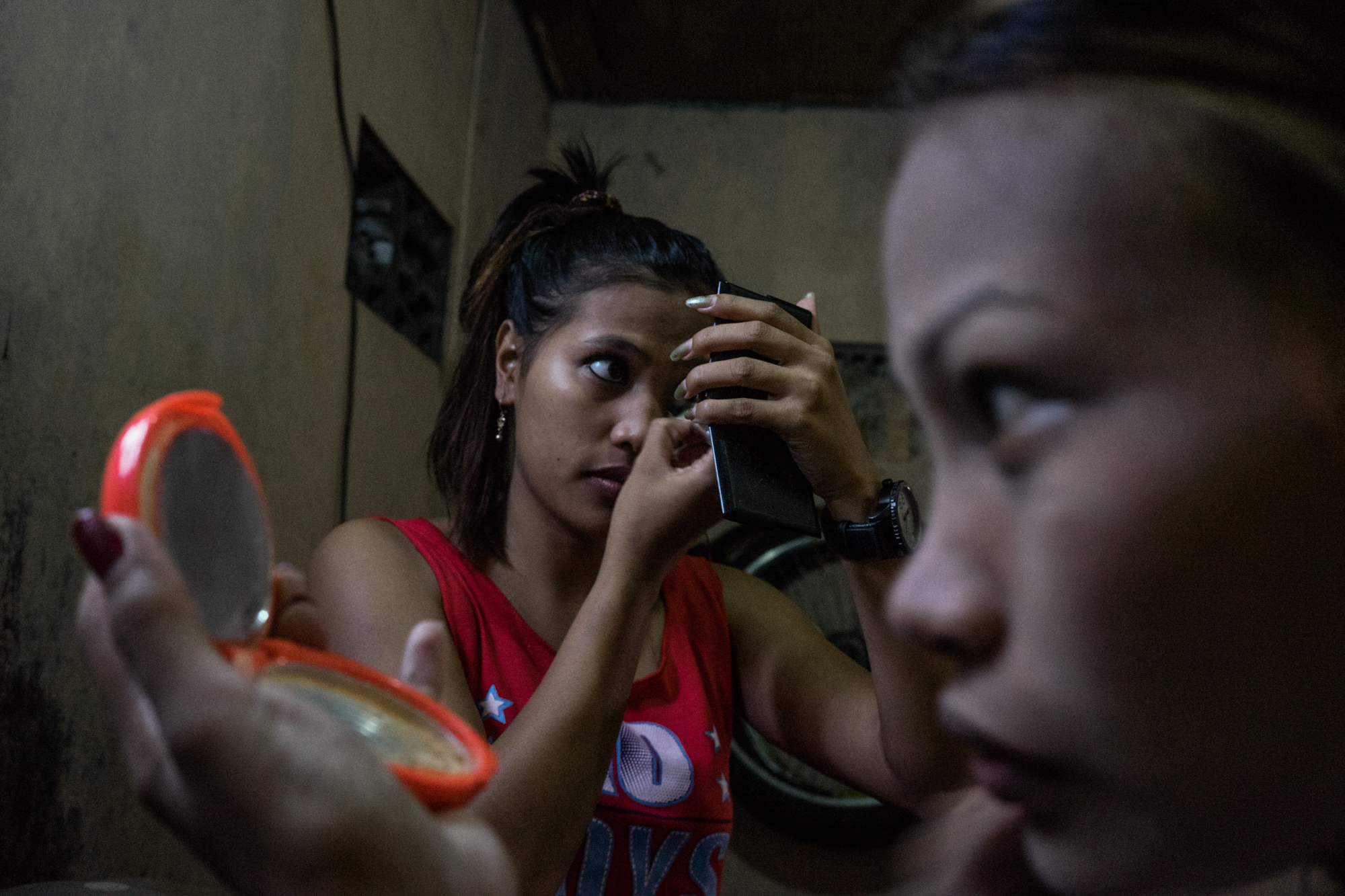
‘If you know how to fight they won’t usually hurt you,’ Gemma tells us. ‘It’s best if you look brave.’
When Haiyan came, the roof of their house got blown off, the walls completely destroyed. The store their mother ran was looted, and almost nothing was left. Jojo describes nights on the streets of Angeles City as affording small steps in rebuilding her home – going home with a foreigner can get her enough money for hollow blocks, then maybe next time a bit of plywood, the roof. Their house is by a lush green field and the mountains, and it was Jojo who worked nights to get it rebuilt. The walls inside are blue, with photographs of the girls, still water damaged from typhoons.
Back in Leyte, their mother lives in that house. It withstood the last rainfall.
 A version of this story also appeared on The Washington Post on April 28, 2017
A version of this story also appeared on The Washington Post on April 28, 2017Sex Trafficking in the Philippines:
Explore the science
This episode was produced in partnership with KCRW’s UnFictional.
Behind the Science
The Philippines is an archipelago of more than 7,000 islands hugging the Pacific Ocean. An average of 20 typhoons form over the ocean and pummel the Philippines each year. According to the Intergovernmental Panel on Climate Change, the United Nations organization monitoring climate change and its impacts, noted that “a changing climate leads to changes in the frequency, intensity, spatial extent, duration, and timing of extreme weather and climate events, and can result in unprecedented extreme weather and climate events.”
While we can’t say that a specific typhoon, hurricane or drought happened because of climate change, we are finding that human-influenced climate change creates the conditions that make weather events like these more severe– like increased moisture and warmer seas that make typhoons more powerful. Rising seas increase the devastation brought by typhoons – the worst destruction of Typhoon Haiyan was wrought by storm surges up to 17 feet high, and in the Philippines, the seas are estimated to be rising at five times higher than the global average.
International organizations have recognized the link between disasters and human trafficking since at least 2006, and the track towards worsening storms is expected to amplify the negative effects of disasters on women.

Update: This podcast episode won a Regional Edward R. Murrow Award in the News Documentary category.








